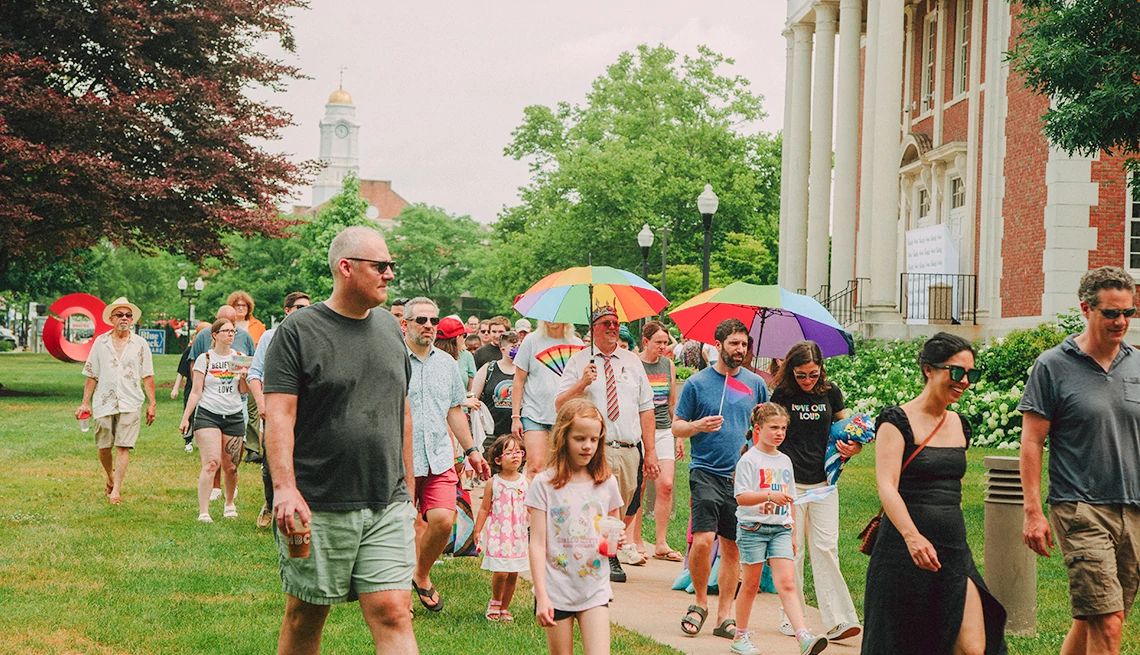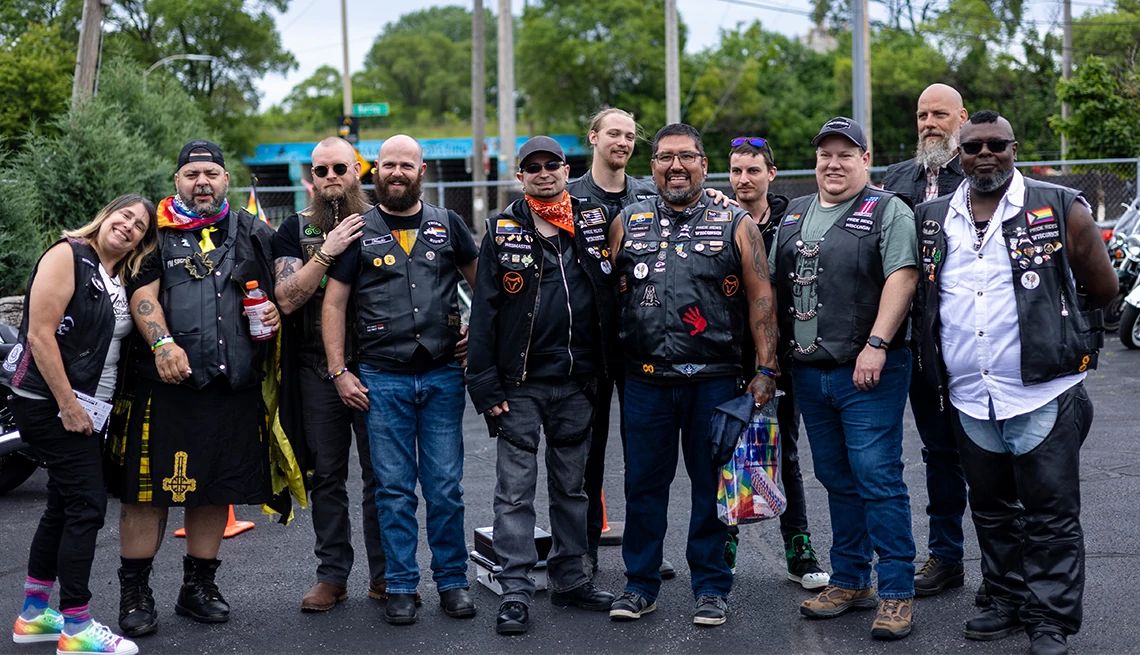AARP Hearing Center


In June, Pride Month is more than an excuse to don every color of the rainbow. It marks a special time for some members of the LGBTQ+ community and their allies to join forces for celebration and advocacy.
Pride Month has been observed for decades.The month was officially recognized when President Bill Clinton designated June as Gay and Lesbian Pride Month in 1999. The commemoration recognizes the LGBTQ+ community, which stands for lesbian, gay, bisexual, transgender and queer or questioning.
A Statista poll found that 5.1 percent of Generation X, 3 percent of boomers and 1.8 percent of the silent generation identified as LGBTQ+, as of 2024. According to a 2023 Gallup poll, the LGBTQ+ community has grown over the years, with 7.6 percent of U.S. adults identifying as LGBTQ+.
But despite growing representation, the LGBTQ+ community still faces some challenges.
“Our elder pioneers’ strength and activism, during other extremely difficult times, paved the way for the freedom that we celebrate in this Pride season,” says Michael Adams, CEO of SAGE, the country’s largest and oldest organization dedicated to serving older LGBTQ+ individuals. Jackie Lees, 72, from Asheville, North Carolina, is on the board of directors for Blue Ridge Pride Center and a member of its AARP North Carolina-affiliated Generation Plus Committee – a group dedicated to serving members of the LGBTQ+ community who are 55 and older. She is also transgender.
Lees’ local Pride festival doesn’t happen until the fall, but she recognizes the importance of giving people 50 and older a space to embrace their identities without fear or judgment.
“[Pride] means a celebration of the struggles we went through to get to this point,” Lees says. “Whether we know each other or not … it’s a good feeling to be around others.”
One of those struggles most often honored during Pride Month is the Stonewall Uprising, a pivotal event for the gay rights movement in the U.S., which began June 28, 1969, in the New York City neighborhood of Greenwich Village.
Lees says older members of the LGBTQ+ community can use Pride to close the “generational gap.”
“We’re here to mentor the younger ones, if they want to hear us,” Lees says.
Check out our nationwide round-up of events. It’s certainly not all-encompassing, so if you don’t see an event local to you, try an online search for nearby Pride Month events.




































































More From AARP
LGBTQ+ Adults Share Health Challenges
AARP research reveals caregiving and isolation challengesBook Tells the Love Story Behind America’s First Gay Marriage
‘The Wedding Heard ’Round the World’ set off decades of debate over rights of same-sex couples
Are LGTBQ-Friendly Retirement Communities on the Rise?
Some see growing market for ‘affinity housing’ options